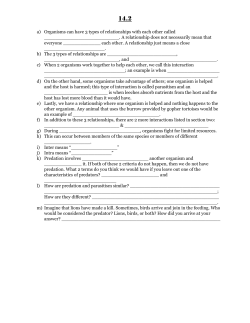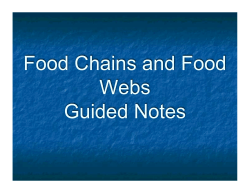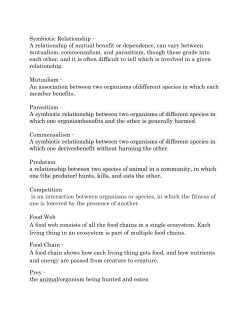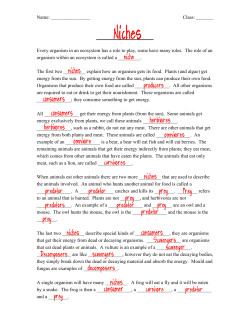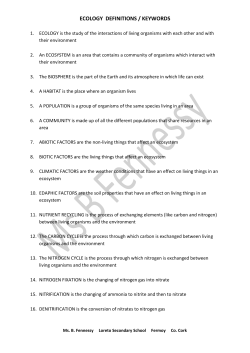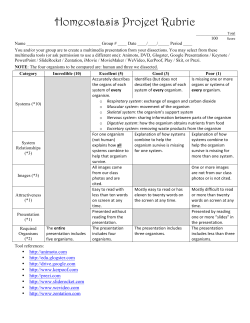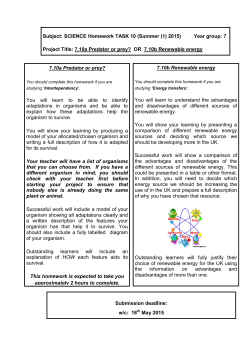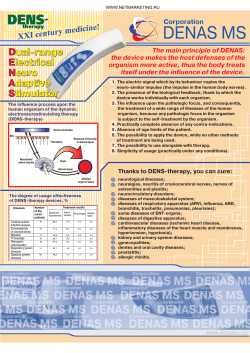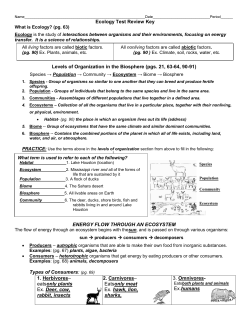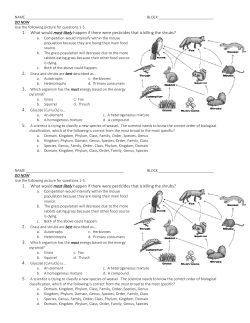
File
NAME ____________________________________________________ BLOCK ___________________________ DO NOW 1. Choose the best pair of words to complete the sentence: The Hoover dam generates _____ energy using _____. a. Renewable; wind c. Nonrenewable; oil b. Renewable; water d. Nonrenewable; water 2. Which of the following is a disadvantage of wind farms? a. Loud noise c. Wind is unpredictable b. Loss of land d. All of the above Use the following equation to answer questions 3-5. 3. Photosynthesis is a process used to create fuel for cell processes in which organism? a. Childish Gambino c. Evergreen trees b. Komodo Dragon d. Influenza 4. Glucose (C6H12O6) is an example of… a. An element c. A heterogeneous mixture b. A homogenous mixture d. A compound 5. Is the Law of Conservation of Mass observed in this chemical reaction? a. Yes, because there are mixtures on both sides of the equation. b. Yes, because there are 6 carbons (C) on both sides of the equation. c. No, because there are 12 hydrogens (H) in the reactants and 6 hydrogens (H) in the products. d. No, because water is not present on both sides of the equation. NAME ____________________________________________________ BLOCK ___________________________ DO NOW 1. Choose the best pair of words to complete the sentence: The Hoover dam generates _____ energy using _____. a. Renewable; wind c. Nonrenewable; oil b. Renewable; water d. Nonrenewable; water 2. Which of the following is a disadvantage of wind farms? a. Loud noise c. Wind is unpredictable b. Loss of land d. All of the above Use the following equation to answer questions 3-5. 3. Photosynthesis is a process used to create fuel for cell processes in which organism? a. Childish Gambino c. Evergreen trees b. Komodo Dragon d. Influenza 4. Glucose (C6H12O6) is an example of… a. An element c. A heterogeneous mixture b. A homogenous mixture d. A compound 5. Is the Law of Conservation of Mass observed in this chemical reaction? a. Yes, because there are mixtures on both sides of the equation. b. Yes, because there are 6 carbons (C) on both sides of the equation. c. No, because there are 12 hydrogens (H) in the reactants and 6 hydrogens (H) in the products. d. No, because water is not present on both sides of the equation. EXIT TICKET 1. DRAW a line to connect the vocab word to the picture that represents the definition. CONSUMER 2. TROPHIC LEVELS MUTUALISM ABIOTIC FACTOR DRAW or DESCRIBE the differences between a food chain and a food web. EXIT TICKET 1. DRAW a line to connect the vocab word to the picture that represents the definition. CONSUMER 2. TROPHIC LEVELS MUTUALISM DRAW or DESCRIBE the differences between a food chain and a food web. ABIOTIC FACTOR Ecology Review – Week 32, Day 1 Vocabulary Cards – Part 1 Directions: UNSCRAMBLE the words (I made it soooo easy this time…the first and last letters are already in the right spots…). CHECK your work up front. COLLECT 20 notecards from Ms. Ball. COMPLETE your notecards. Botiic Ftocar A living part of an ecosystem Aotiibc Ftocar A nonliving part of an ecosystem Cniuommty All the populations of organisms in an ecosystem Paoulioptn A group of organisms of the same species living in the same Paoulioptn Disteny Measures the number of individual organisms living in a defined space Eocoystsem Hitabat All the living and nonliving parts of an environment as well as the interactions among them The place where an organism lives Nhcie An organism’s role in its environment Pedatiron A relationship in which one animal hunts, kills, and eats another Cmpeittooin An interaction that occurs when organisms try to get the same resources Cpearotooin A way organisms interact that helps each other Muuatislm A symbiotic relationship between two organisms in which both organisms benefit (happy face, happy face) A symbiotic relationship in which one organism benefits and the other neither benefits or is harmed (happy face, blah face) A symbiotic relationship in which one organism benefits and the other is harmed (happy face, sad face) An organism that makes its own food (autotroph) Cmomsaisenlm Paariitssm Podrcuer Csonmeur Food Web An organism that does not make its own food, requires energy from other organisms (heterotroph) An organism that gets energy by breaking down dead organism and the wastes of living things A series of organisms in which each feeds on the one at the next lower trophic level A network of interconnected food chains Torhpic Leevls A feeding level in an ecosystem Dcosmpoeer Food Caihn
© Copyright 2025
